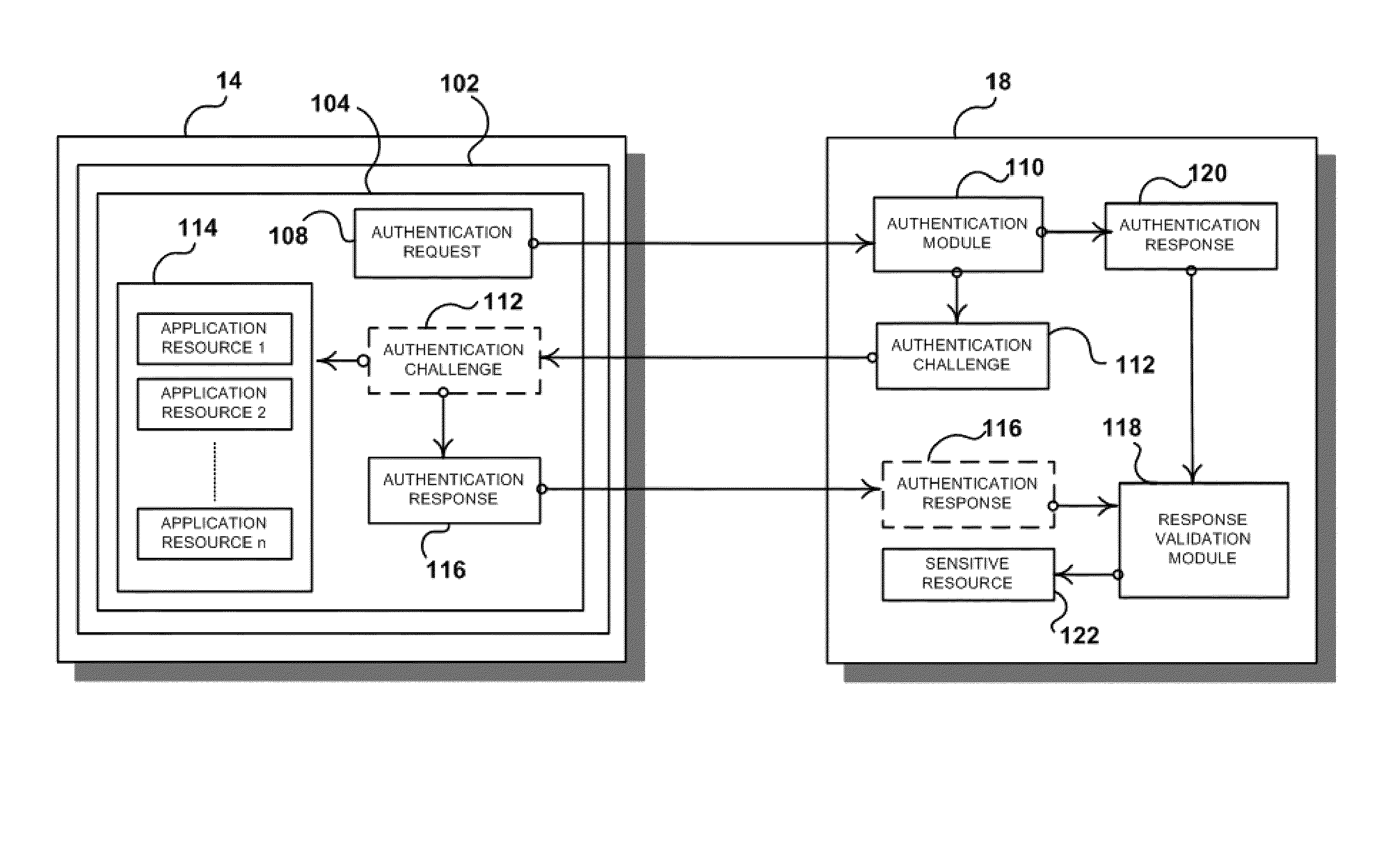Application authentication system and method
a technology of authentication system and application, applied in the field of software related security, can solve the problems of static login credentials being weak, ineffective against, phishing, sniffing,
- Summary
- Abstract
- Description
- Claims
- Application Information
AI Technical Summary
Benefits of technology
Problems solved by technology
Method used
Image
Examples
Embodiment Construction
[0032]In accordance with the present application, a system and method are provided for authenticating executable program code running on a host device. More particularly, the present application provides a system and method for a control server or other external device to authenticate a “client” software application (a software controlled process executed, for example, on the host device) that is attempting to access secured data and resources stored on the control server or the device. In an embodiment, the secured data and resources reside outside of the host device, and authorization providing access to the secured data and resources, for example, via the control server, also authenticates the client software application.
[0033]In accordance with an embodiment, a software application operating on a computing device requests access to information, data and / or services. The computing device receives a unique “challenge,” as known in the art, from a control server. In particular, the...
PUM
 Login to View More
Login to View More Abstract
Description
Claims
Application Information
 Login to View More
Login to View More - R&D
- Intellectual Property
- Life Sciences
- Materials
- Tech Scout
- Unparalleled Data Quality
- Higher Quality Content
- 60% Fewer Hallucinations
Browse by: Latest US Patents, China's latest patents, Technical Efficacy Thesaurus, Application Domain, Technology Topic, Popular Technical Reports.
© 2025 PatSnap. All rights reserved.Legal|Privacy policy|Modern Slavery Act Transparency Statement|Sitemap|About US| Contact US: help@patsnap.com



